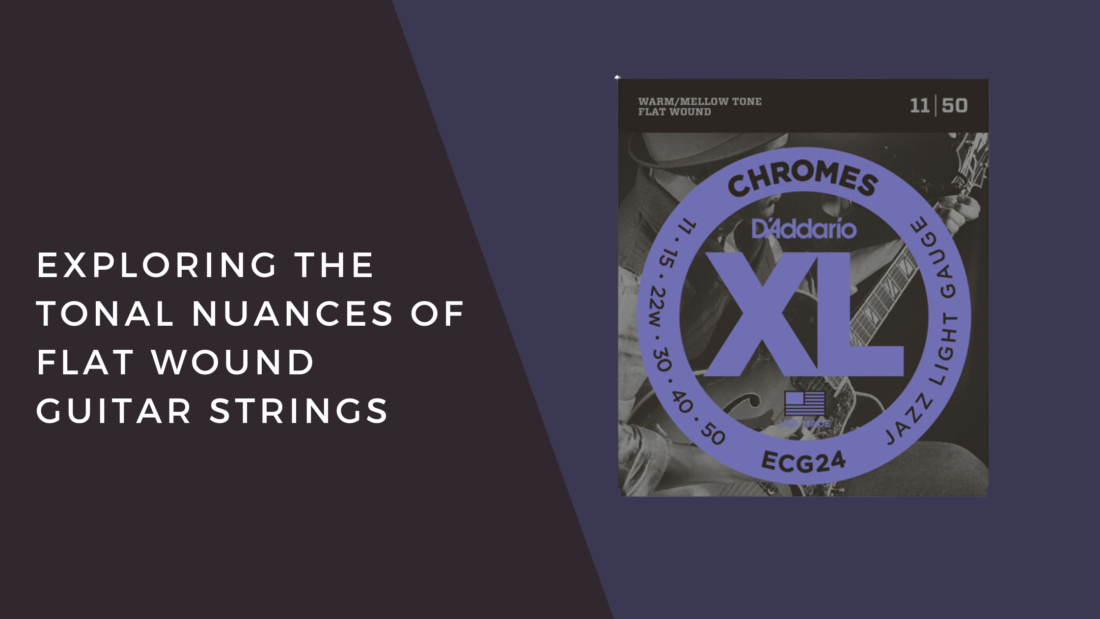Exploring Flat Wound Guitar Strings: A Comparison and Review
In a recent video, a talented guitarist delved into the world of flat-wound guitar strings, aiming to understand their unique characteristics and tonal qualities. As observers and enthusiasts, we were captivated by the experience and are excited to share the insights gained. Join us as we explore the comparison between flat-wound and round-wound strings, and discover the subtle differences that can shape one’s playing style.
Understanding Flat Wound Strings: Flat wound strings, with their smooth and flat surface, offer a departure from the more common round wound strings typically found on electric guitars. Known for their mellow and subdued tone, these strings create a distinct atmosphere and ambiance. Additionally, flat wound strings often feature a wound G string, reminiscent of the construction found in acoustic guitars. This adds to their unique sound and feel.
Comparing Flat-Wound and Round-Wound Strings: In the video, the guitarist embarked on a sonic journey, experimenting with both round-wound and flat-wound strings on their trusted Fender Star guitar. Starting with the familiar round wound strings, the video showcased the bright, crisp, and dynamic qualities that players have come to love. However, curiosity led to the exploration of the potential of flat wound strings.
Upon switching to flat wound strings of the same gauge, a noticeable transformation occurred. The mellow and smooth tonal characteristics immediately took center stage, providing a more relaxed and warm sound. While the difference may be subtle to some, those seeking a softer and more subdued tone, particularly in jazz or mellower genres, will find flat-wound strings to be a delightful option.
Personal Impressions and Considerations: From the guitarist’s perspective, adapting to flat-wound strings was an intriguing experience. The smooth surface of these strings reduced friction while sliding along the fretboard, resulting in a unique tactile sensation. It is worth noting, however, that bending notes on flat wound strings required a slightly greater effort, especially with the wound G string. This adjustment may be particularly important for players who frequently incorporate bends into their playing style.
Making the Right Choice: Ultimately, the decision between round-wound and flat-wound strings hinges on personal preference and the desired musical style. If one seeks to infuse a touch of mellow elegance into their playing or explore jazz-inspired tones, flat-wound strings offer an excellent avenue for artistic expression. On the other hand, if one prefers the bright and vibrant sound commonly associated with round wound strings, they remain a versatile and popular choice among guitarists.
Conclusion
This exploration of flat-wound guitar strings has shed light on their unique tonal nuances and the playing experience they offer. While they may not suit every player or musical genre, flat-wound strings possess the power to add a distinctive touch to one’s sound. We invite you to watch the accompanying video, where the guitarist demonstrates the differences between the two string types in detail.
Remember, the key to finding your ideal string type lies in experimentation and exploration. Trying out both round wound and flat wound strings firsthand will allow you to discover the sound that resonates with your musical vision. Whether you opt for the mellowness of flat wound strings or the vibrant brightness of round wound strings, the true essence of playing lies in the joy and inspiration they bring.
We hope this blog post has provided valuable insights into the world of flat-wound guitar strings. If you found it informative, please consider subscribing to the YouTube channel for more captivating guitar gear-related content. Feel free to share your thoughts and queries in the comments section, as we cherish the opportunity to engage in meaningful conversations. Happy playing!



